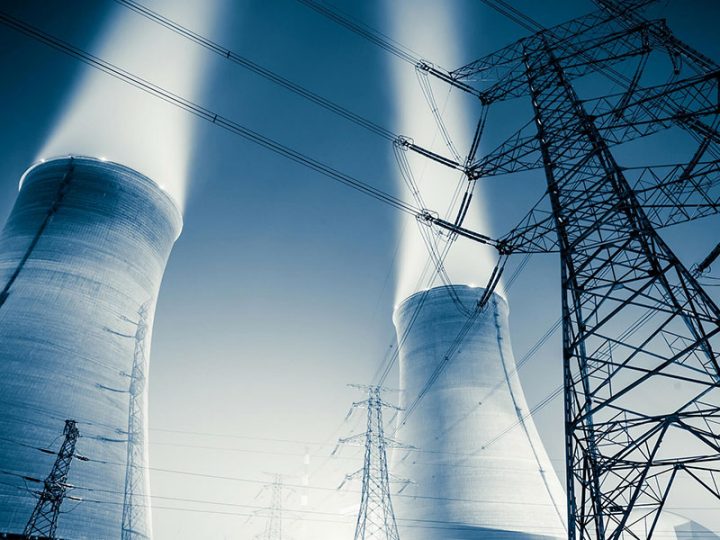What crucial trends are driving the photovoltaic industry?
The maturing photovoltaic (solar) energy market is driven by increased energy demand, international Green politics, the affordability of solar systems and improved solar technologies. We will see global solar installations of almost 60 GW in 2015. The annual growth rate of solar installations from 2000 to 2015 was more than 40%. Globally, solar is a great success story. However, we have seen lots of ups and downs in various local markets. The German market for example dropped 70% in volume in the last three years as a result of national political decisions.
Energy demand is increasing globally. At the same time environmental consciousness around the necessity for CO2 emission reductions and the know-how transfer on how to install large PV systems caused many countries to introduce different incentive programs to support solar. Japan pushed solar heavily after the Fukushima disaster. The US finally decided to support solar under the Obama administration, and China as the world’s major producer of solar components, has opened up a huge domestic market. But we are also seeing other countries becoming more and more active like Thailand, Malaysia, South Africa, Nigeria, Brazil and Panama to mention just a few.
Another major driver is the affordability of solar. Economies of scale have been significant, a kilogram of silicon (a key raw material used to make nearly all solar panels today) costs less than $16 today, installing systems has become cheaper and more efficient and the levelised cost of generating a kWh of solar energy has become competitive compared with other energy sources even in the renewable sector.
Last but not least solar technologies have improved over time. Average solar panel efficiencies (for wafer-based silicon panels) have increased from 12 to 16 % over the last decade. In addition inverter (an electronic device or circuitry that changes DC to AC) manufacturers are beginning to design solutions to support facilitating some of the power grid integration challenges for Renewables.
What market segments will experience the most growth and why?
To look at growth it makes sense to define segments by the type of installation. It is generally assumed that the fastest growth will come from the residential segment (installing solar on the roofs of homes). This is at least true for the USA and Japan where there are booming residential markets, often assisted by strong government support and consumer financing solutions. According to IHS, in the US nearly one-fourth of all residential solar installations have now come on-line without any state incentive. Interest rates are also low which makes financing more attractive. Leases and loans are widely used within the residential markets. The sales organizations in these markets are also growing in number, staff are becoming more experienced and qualified and customer acquisition costs are declining. The public awareness of solar is also increasing among home owners as it becomes more mainstream in society. The combination of a residential solar system with energy storage options can also be attractive for the homeowner looking for true independence from the grid. Decentralized generation in the residential segment is also becoming more attractive as prices continue to fall
The large utility-scale solar market is the heavy weight among all the segments accounting probably for at least 50% of all installations by volume. This is unlikely to change in the foreseeable future. Year-over-year, system pricing has significantly fallen, with the largest declines being achieved in the large scale and commercial sector. Money has been affordable and available at the same time. Permitting procedures have eased, land is available in the larger countries. Grid capacities and connections are not (a big problem in these same markets, yet. Energy is needed and utilities consider this segment as a strong driver for their future business as a result of Renewables Portfolio Standards (RPS) being introduced. kWh-generation costs for a large, utility-scale project are very attractive and competitive, especially given the fact that the O&M cost is stable over 2 to 3 decades. This assumes that the quality and reliability of the critical components such as panels are inverters meet expectations and no major, systemic failures start to occur. We are seeing first solar installations which are at the GW scale.
The commercial and industrial (C&I) segment will also likely continue to see growth, for the similar reasons to the other segments. Emphasis also shifts to these segments when markets become saturated with utility-scale systems. The C&I segment also has the advantage of access to large areas of roof space where solar can be relatively easily installed without much intrusion on the environment. C&I systems are a lucrative and affordable investment for many middle-sized business and corporate owners in North America and Europe.
Small in scale and unnoticed by most industry stakeholders are larger off-grid applications for the electrification of islands and villages in rural areas in Africa and Asia. Smart grid developments and large power banks are technology enablers helping this market grow.
What are the key challenges?
There are a number of key challenges around the quality and reliability of solar components (including large-scale component failures) the technical management of existing solar assets, including the second hand solar investment market, continued existence of important incentive programs and the successful transfer of knowledge to new geographical markets.
The quality of solar panels and inverters is lacking consistency and clear standards in today’s supply. SolarBuyer has audited over 80 different panel manufacturers that represent about 90% of the global supply. Only 10% of the panels manufacturers were rated as having excellent quality and representing a low risk of failure or under-performance. The bulk of manufacturers show varying degrees of quality which can put systems at risk if the buyer or investor is not proactive in understanding and mitigating the risk upfront. Systems worldwide are seen to be failing or degrading excessively. This causes operations and maintenance costs to increase and the expected financial gains of systems to be lost. This is creating real headaches for investors and insurance companies. The industry clearly needs better standards, better technical diligence and independently conducted quality assurance.
The growing second hand market for solar installations is lacking a reliable and standardized process for conducting diligence on the assets. Similarly, operations and maintenance (O&M) management of installations is underdeveloped in major markets such as the US, China and India. Hopefully new markets can learn from these challenges and the knowledge will be transferred to new regions such as Asia, Africa and Latin America in the next few years. Poorly performing systems can significantly harm the industry’s reputation and expectations around sustainability.
Lastly, land development and affordable financing remains a key challenge in many regions outside the major developed markets. The lack of incentive programs can slow down the number of new installations significantly.
Overall the future for solar is strong, but there are some key challenges that could undermine the industry’s growth and success if not tackled head-on early enough.




